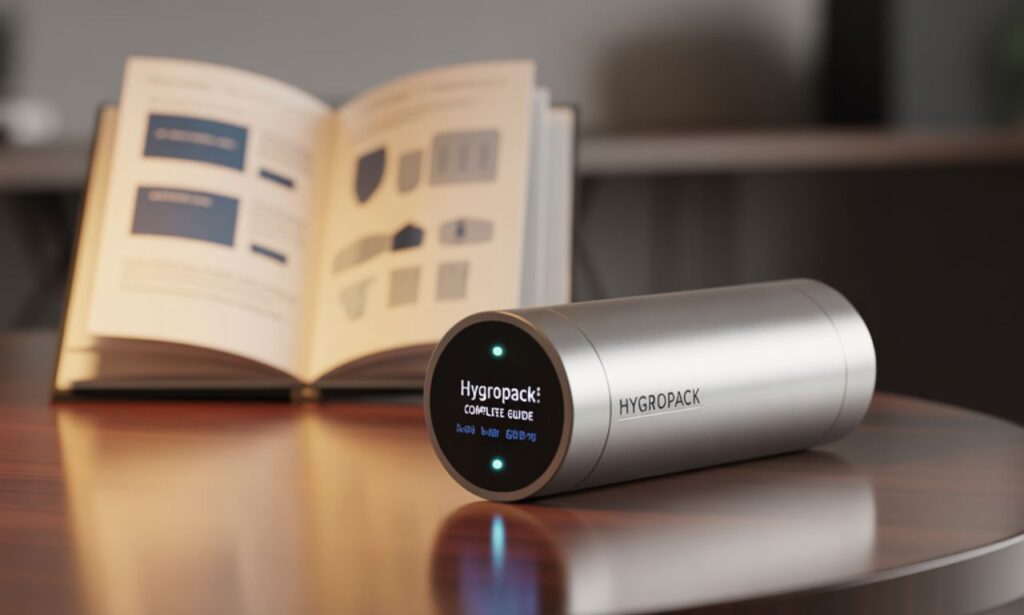HEALTH
Hygropack: The Essential Guide

Moisture is one of the most persistent enemies of product preservation. Whether it’s pharmaceuticals, electronics, or packaged food, excessive humidity can reduce shelf life, compromise safety, and lead to costly losses. This is where the hygropack comes in—a small but powerful solution designed to protect products by controlling moisture levels.
In this article, we’ll explore what a hygropack is, how it works, its benefits across industries, and practical tips for using it effectively. Our goal is to provide a comprehensive, research-backed, and easy-to-understand guide so you can see why hygropacks have become an essential tool in the modern supply chain.
What Is a Hygropack?
A hygropack is a specialized moisture control packet containing desiccant materials, typically silica gel, clay, or molecular sieves. Unlike traditional desiccants, hygropacks are engineered to regulate relative humidity (RH) within packaging, not just absorb excess moisture. This means they can both absorb and release moisture as needed, ensuring that products stay in an optimal environment.
For example, pharmaceutical blister packs often rely on hygropacks to maintain RH between 40–60%, protecting drugs from becoming ineffective due to dampness or brittleness.
How Hygropacks Work
The science behind hygropacks is based on sorption technology. Here’s how they function step by step:
-
Absorption: When the humidity inside a package rises, the hygropack absorbs water molecules.
-
Release: If the environment becomes too dry, it releases moisture back into the packaging.
-
Stabilization: This balance ensures that the product remains in a consistent microclimate, reducing risks of degradation.
Key Benefits of Using Hygropacks
1. Protects Against Moisture Damage
-
Prevents mold growth.
-
Keeps products from swelling, cracking, or breaking down.
2. Extends Shelf Life
-
Pharmaceuticals remain potent longer.
-
Electronics are shielded from corrosion.
-
Food stays fresh without preservatives.
3. Cost-Effective Insurance
-
Reduces product returns and recalls.
-
Minimizes waste due to spoilage.
Key Takeaway: A small hygropack can save companies thousands in product losses.
Applications Across Industries
Hygropacks are versatile and used across multiple sectors:
Pharmaceuticals
-
Maintains tablet hardness.
-
Preserves the efficacy of capsules.
Electronics
-
Prevents rusting of microchips.
-
Protects sensitive sensors.
Food & Beverages
-
Extends the freshness of packaged snacks.
-
Prevents clumping in powdered goods.
Textiles & Leather
-
Stops mildew during shipping.
-
Keeps leather goods supple.
Practical Tips for Using Hygropacks
To maximize effectiveness:
-
Choose the Right Size
-
Small sachets for pill bottles.
-
Larger packs for shipping containers.
-
-
Follow Storage Guidelines
-
Keep hygropacks sealed until use.
-
Store in airtight containers to prevent premature saturation.
-
-
Check Shelf Life
-
Replace expired packs regularly.
-
Most last 1–3 years, depending on the environment.
-
The Role of Hygropacks in the Modern Era
In today’s global supply chains, products often travel thousands of miles through varying climates. Therefore, hygropacks have become critical in reducing risks of moisture-induced damage, ensuring products arrive intact to consumers.
Additionally, as sustainability becomes a priority, manufacturers are exploring eco-friendly hygropack materials that are biodegradable and recyclable, reducing environmental impact.
Conclusion
Hygropacks may seem small, but their role is monumental in protecting valuable goods from moisture. From ensuring the safety of medicines to preserving the integrity of electronics and food, they have become an indispensable part of packaging solutions.
Key Takeaway: Hygropacks don’t just fight moisture—they create balance, making them the smarter choice for industries worldwide.
FAQs
What is the difference between a hygropack and silica gel?
A hygropack regulates humidity by absorbing and releasing moisture, while silica gel only absorbs it.
Are hygropacks reusable?
Some can be reactivated by heating, but most are designed for single use to ensure maximum reliability.
How long do hygropacks last?
Typically between 1–3 years, depending on storage conditions and packaging environment.
Can hygropacks be used with food?
Yes, food-grade hygropacks are safe and commonly used in snacks, powders, and dry foods.
Do hygropacks affect product taste or smell?
No, they work passively on humidity and don’t alter flavor, aroma, or texture.
Are there eco-friendly hygropacks?
Yes, many brands now offer biodegradable options to align with sustainable packaging practices.
Where can I buy hygropacks?
They are available through packaging suppliers, pharmaceutical distributors, and online retailers.

-

 EDUCATION3 months ago
EDUCATION3 months agoFree Cover Letter Generator: Build Job-Winning Letters in Minutes
-

 GUIDE3 months ago
GUIDE3 months agoBenefits of Online Personal Training for Fitness Success
-

 BUSINESS2 months ago
BUSINESS2 months agoGrow Your Audience with USA Instagram Followers
-

 TECH2 months ago
TECH2 months agoFreedom Forever Solar Reviews Explain How Conversational Intelligence Turns Customer Interactions into Insights